It is April 2020, and the world has entered very uncertain and nerve-wracking times. Many people are wondering how they’re going to get through it. Money will get tight for people who aren’t going to work every day like they used to.
I don’t have any budgeting skills, or stock tips. That’s not really my area. But I can give you some garden ideas on a budget. And not only will growing your own vegetables be inexpensive, but you’ll save a boat load of cash by not buying them at the grocery store.
AND! As if that isn’t enough, you’ll be eating fresh, organic veggies, which will help you remain healthy through all of this pandemic madness. And that is worth its weight in gold. Or carrots.
Idea #1
Don’t buy expensive seeds. While it’s tempting to go for those Heirloom varieties, it isn’t necessary. And when you’re gardening on a budget, well, they’ll break that budget pretty quick.
But don’t to go for the generic seeds sold at grocery stores and big box stores if you don’t have to. Although, it may come to that, as many online seed shops are struggling to keep up with orders.
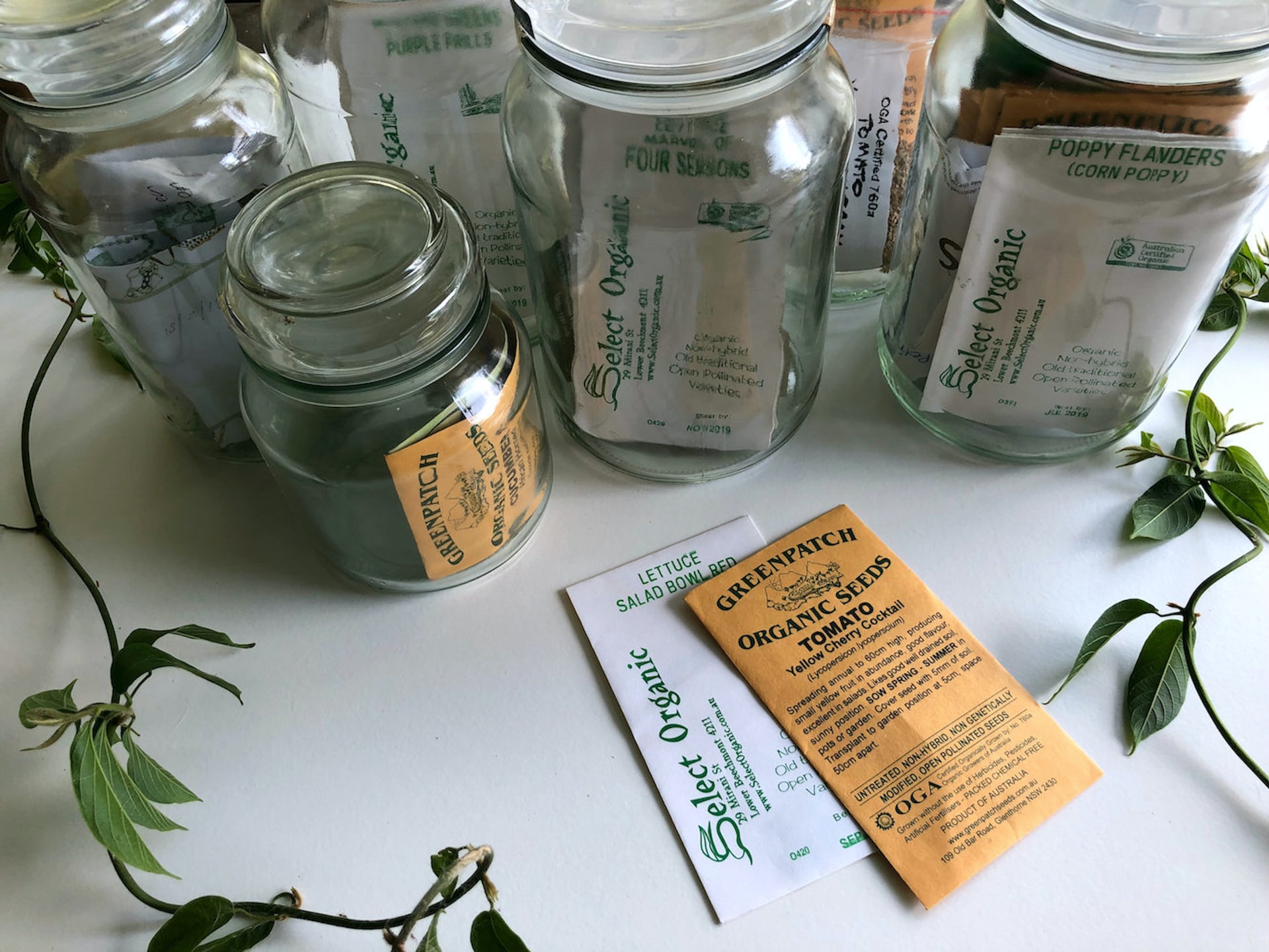
I have talked about Seeds Now! in other articles, and I really think you should give them a try. They sell organic and non-gmo seeds at really great prices. Buy their sample packs, and save a bundle.
Another source of seeds for the garden can be found at your local grocery store – often in the bulk section. That’s right, some of those seeds you buy can be planted in the garden. Keep in mind, some might be too old, or otherwise compromised, so it’s best to sprout them first, then plant them.
Or you can do a viability test: just take 100 seeds, sprout them, and see what percentage sprout. If only 50% sprout, then be sure to plant twice as many seeds as you need. If fewer sprout, plant more seeds. You get the idea.
A short list of grocery store seeds you can plant in the garden:
- dried beans
- quinoa
- amaranth
- dried chickpeas
- flax seed
- herbs and spices such as coriander, dill, mustard seed, caraway and fennel
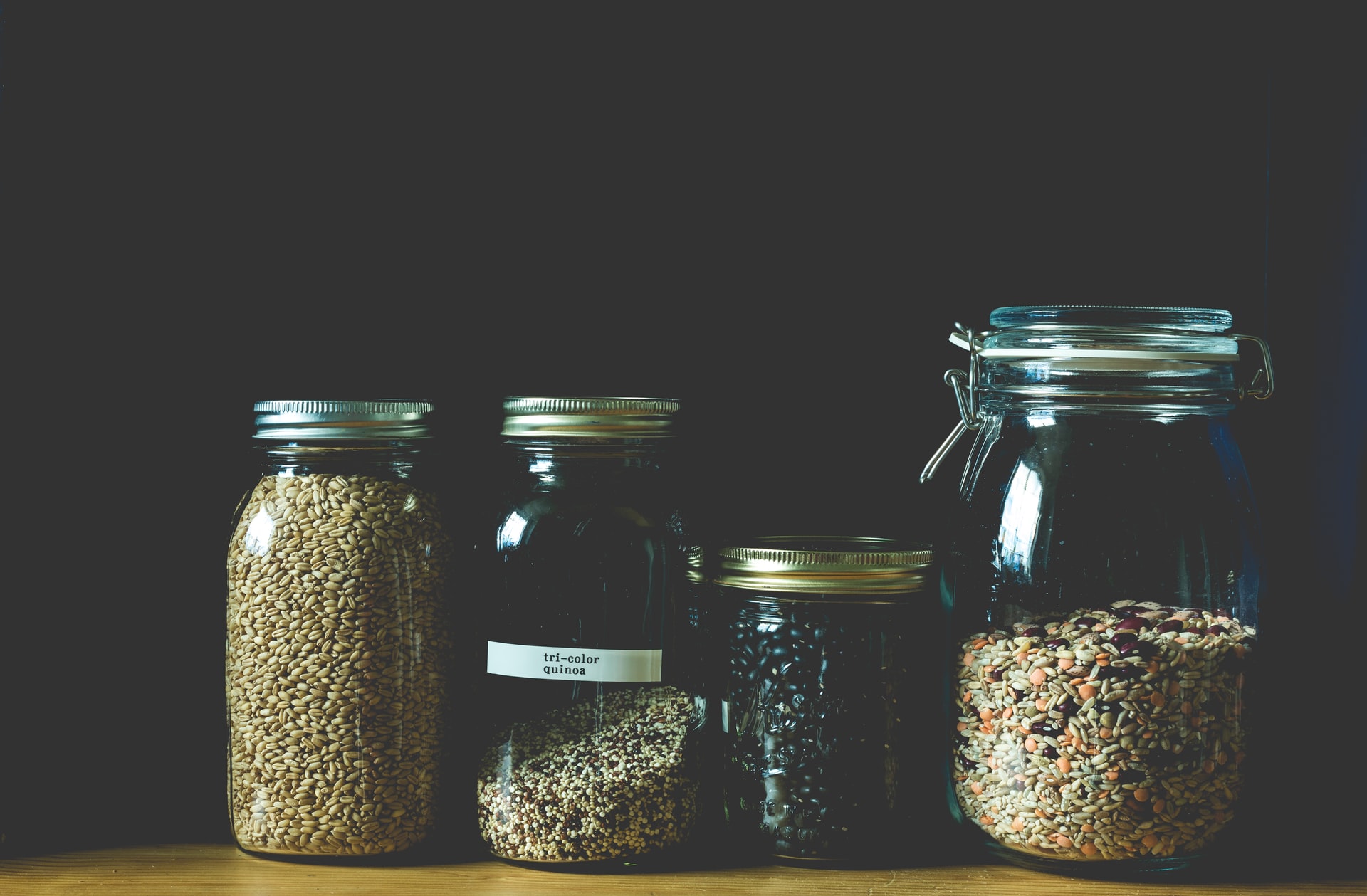
If you can’t wait for Seeds Now! or Botanical Interests, go ahead and buy those cheap seeds. Just get something in the ground!
(NOTE for the future: This article is being written in April 2020, while the COVID-19 virus has things shut down, and delivery is slow because businesses are short-staffed.)
Idea #2
Don’t buy fancy potting soil, seedling trays, or any other specialty items. They aren’t necessary. Start your seedlings in whatever you have handy.
They don’t need to have trays with individual compartments. You can spread seeds over any sort of tray or bucket that will hold soil, and has drainage. When the seedlings are an inch or so tall, you can prick them out, and plant them in their own containers; let them grow a little longer, and then transplant them directly into the garden.
The point is, you don’t need to buy stuff in order to have a fabulous garden. Yogurt containers, tin cans, milk and egg cartons, can all be used to start seeds in. Use your imagination.
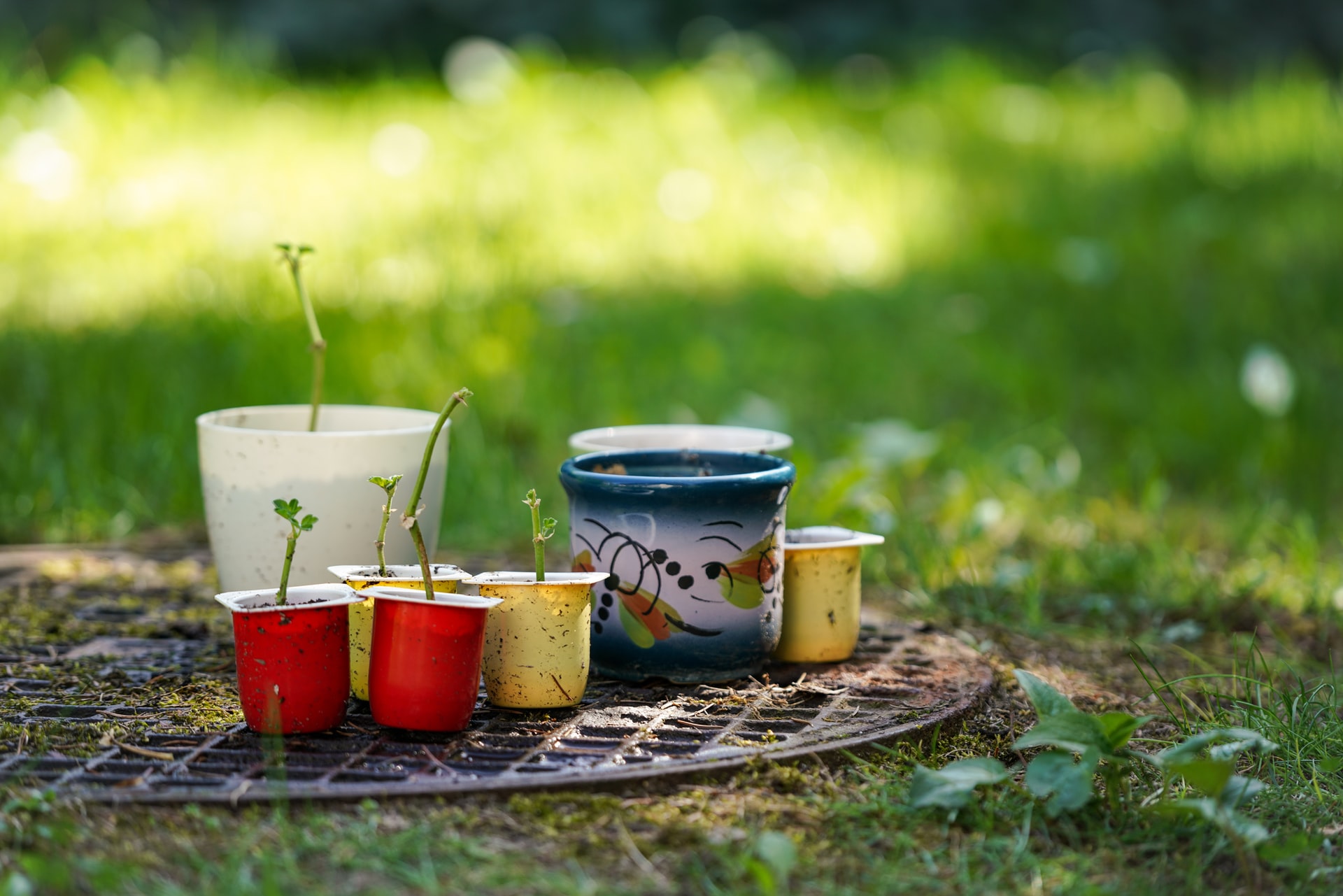
Idea #3
Don’t buy chemical fertilizers. Ever. You don’t need them, and they make your healthy organic vegetables . . . well, not healthy or organic. Many of them are toxic, and most of them are unnecessary.
Use compost, seaweed, and manure to create healthy garden soil. Toss in some rock dust, blood and bone meal, and lime if necessary. Simple organic amendments are all that is needed.

Idea #4
Save seeds. It won’t help you this year, but if you learn to save seeds from your garden vegetables, you won’t have to buy new ones every year. And it really isn’t difficult to save seeds.
The catch is, you have to make sure to buy Open Pollinated seeds this year. This means that they are not hybrids, and the seeds will produce plants that are the same as the plants they came from. Hybrid seeds will not. This article will explain more about seed saving.
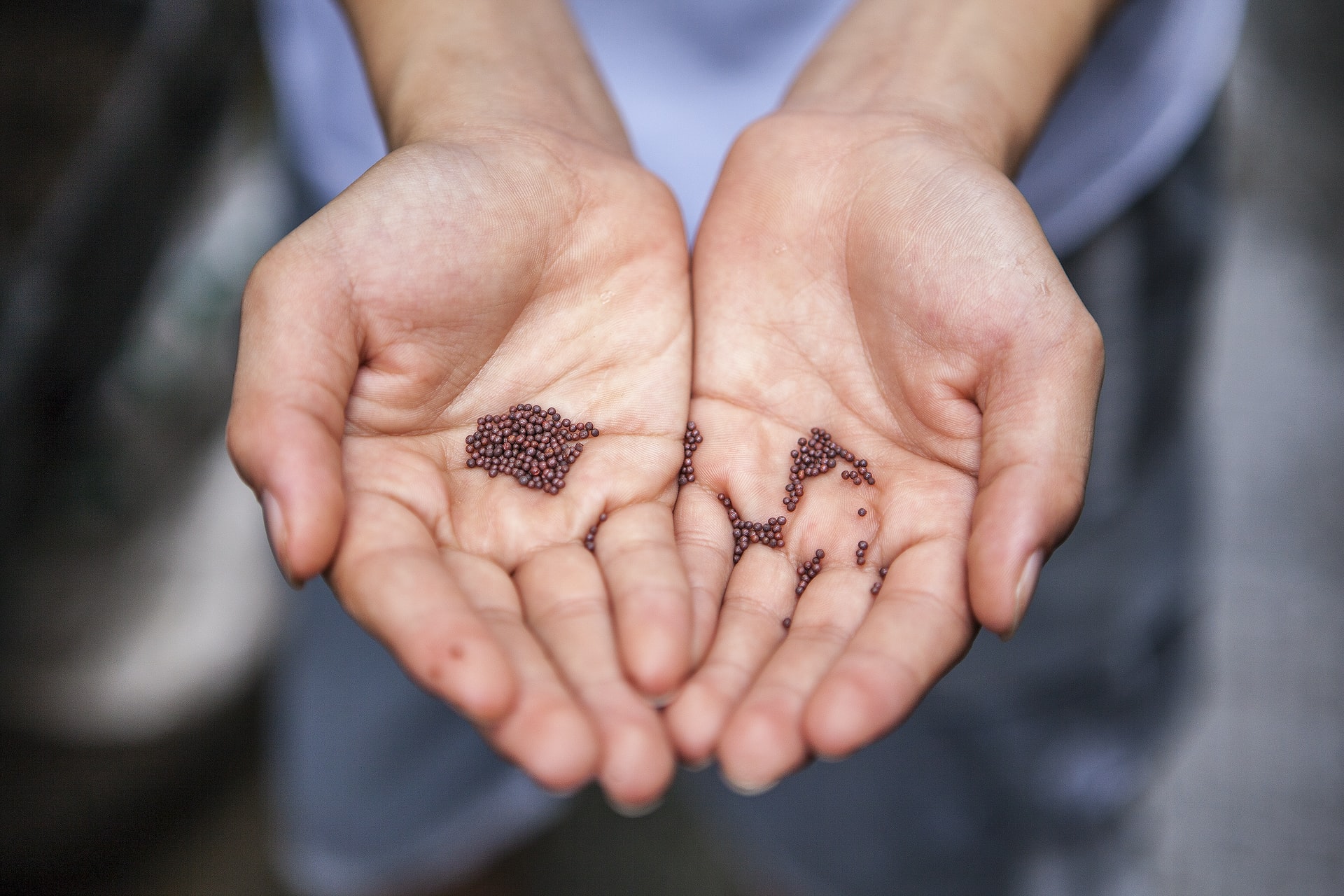
Idea #5
If you live somewhere that makes it necessary to fence your garden – because of animal pressure, usually – try to find innovative ways to avoid buying expensive fencing.
Many animals can be scared off by fluttering, shiny or jingling things hanging in and around the garden. You can also use sticks collected in the woods to make a fence.
Here is an amazing fencing idea, on permies.com, called a junkpole fence. This will keep almost anything out! I said almost. Rabbits and other digging things like moles and groundhogs are another story all together.
I am lucky that I don’t have to contend with rabbits and digging things; and frankly . . . I have no advice for you that doesn’t entail buying a lot of chicken wire and hardware cloth, doing a lot of digging, and perhaps sitting out at night and harvesting some rabbit stew.

Idea #6
Make raised beds, without sides. Use buried wood beds, like I used. Make them even taller, to expand your growing space. The point is, you don’t need to go out and buy lumber, screws, and soil to have a raised bed garden.
When you’re starting a garden on a budget, you might not have the sexiest looking garden at the beginning. But once all of those veggies are growing, all anyone will see is the beauty of homegrown veg, fresh from the garden!
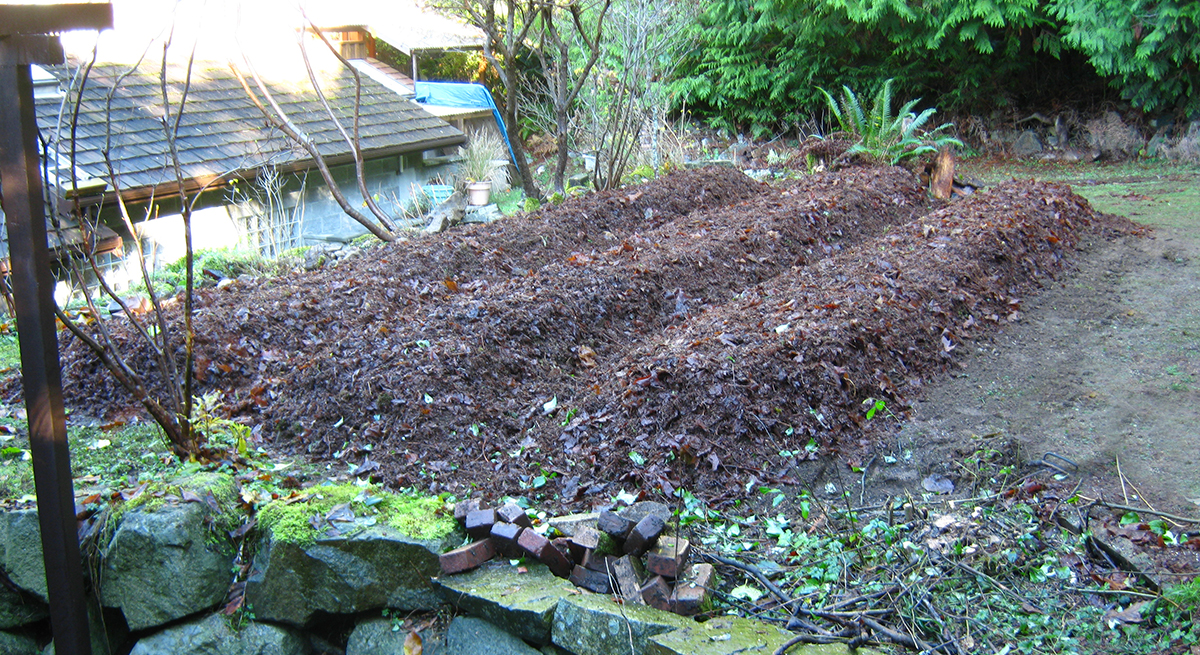
Idea #7
Don’t till your soil. You don’t have to have a rototiller, or a bunch of tools such as hoes, shovels and rakes. You can start a garden without all of that stuff. And tilling every year is really bad for your soil structure, and the soil food web.
Build your garden right on top of whatever is in your yard, covering it with wet paper or cardboard first, and then topping it with compost. I walk you through it in this article.
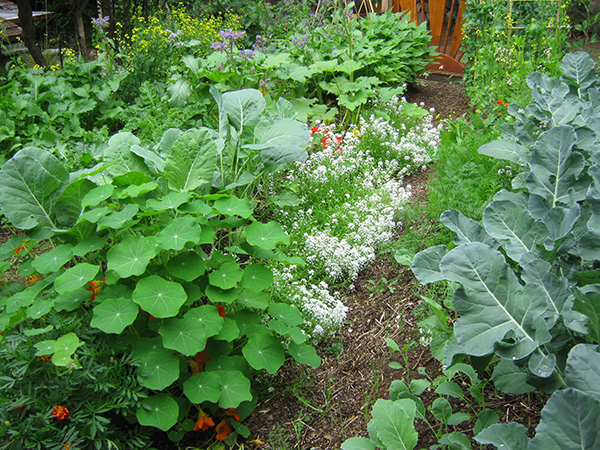
Idea #8
Find a local garden club – or start one! – and share experience, seeds and supplies. The support feels great, and I always seem to have left over seeds to share, as do others.
I started a local online ‘garden club’ on March 26, and as of April 15 we have 97 members. Cool, right?
Due to C-19, we can’t meet, of course; but in our Facebook group we exchange information, ooh and aah over each other’s gardens, and do what I call a Driveway Seed Swap.
We post what we have to share, and then someone says, “Hey, I’d love some of that. And I’ll give you some of this.” Then one of us puts the seeds at the end of their drive way, and the other person picks them up, and leaves their seeds. (I assume there is as much hand washing on their end as there is on my end. Stay safe!)
It’s kinda fun. I’ve never actually met any of these people, but we’re a little community now, sharing information, enthusiasm, and seeds with each other.
The point is, you can get free seeds and other things, by offering up your leftovers for their leftovers. Brilliant, right? : )
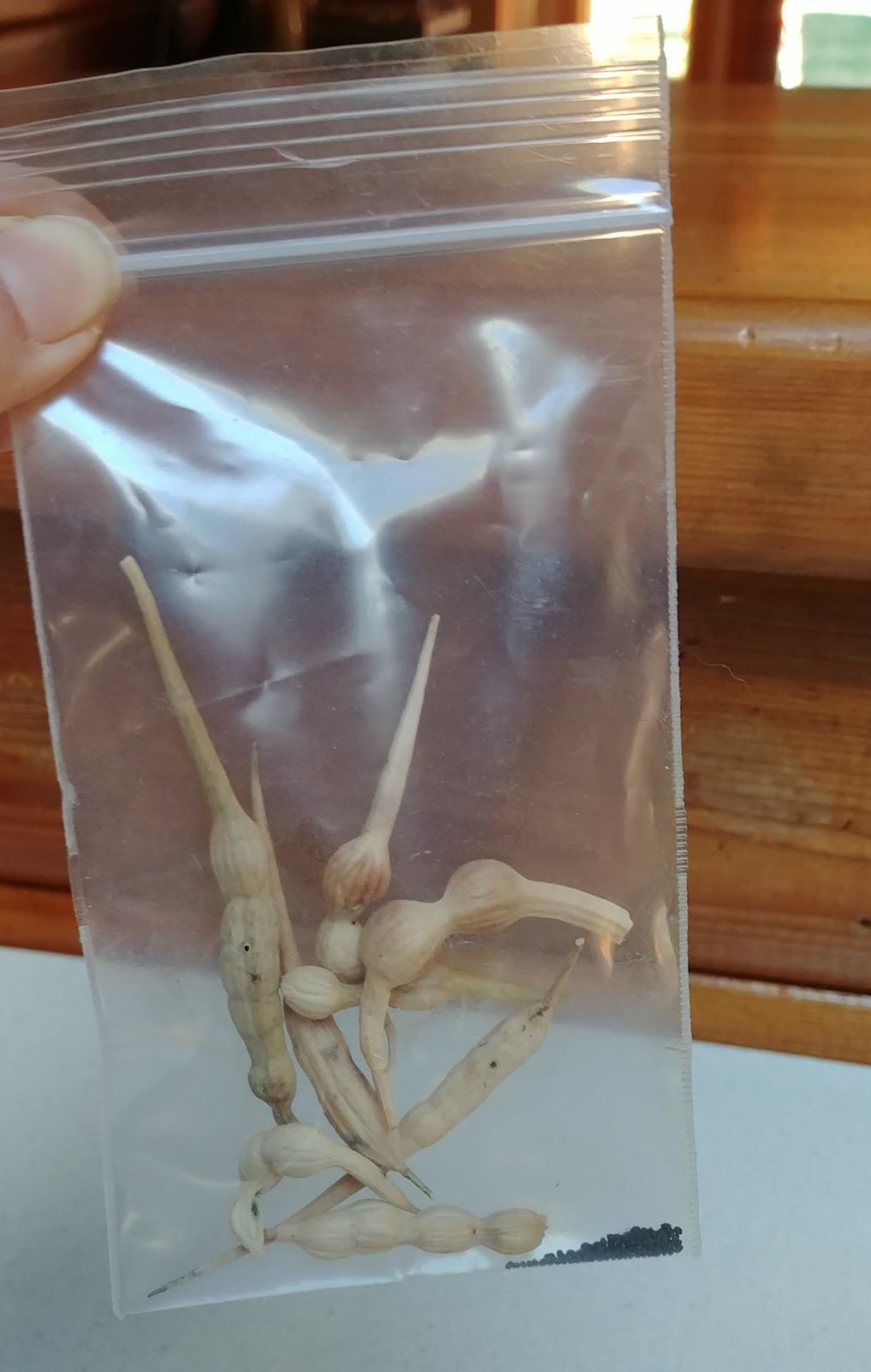
Just get started
The main thing to do is to get started. Throw down that compost, and start planting. Don’t worry about doing it wrong, or making it look ‘nice’. It’s not hard to do. Plant the seeds; make sure they have enough sun and water; pick the odd weed; and watch your garden grow.
There has never been a better time to learn to grow a garden. Uncertainty and fear can be turned around; and you’ll feel serenity and a great sense of accomplishment when you’re in your garden later this summer, harvesting homegrown veggies and herbs, and marveling at the bounty you have created. Honestly, it’s one of the best feelings.
If you have ANY questions about getting started with gardening, please don’t hesitate to ask. I’m here for ya! I really want to get as many people gardening as possible. It’s so important.
Health, Hope & Happiness
Tracy
This article may contain affiliate links. If you click on a link and make a purchase, I will receive a small commission, at no extra cost to you. See the full Affiliate Disclosure here.

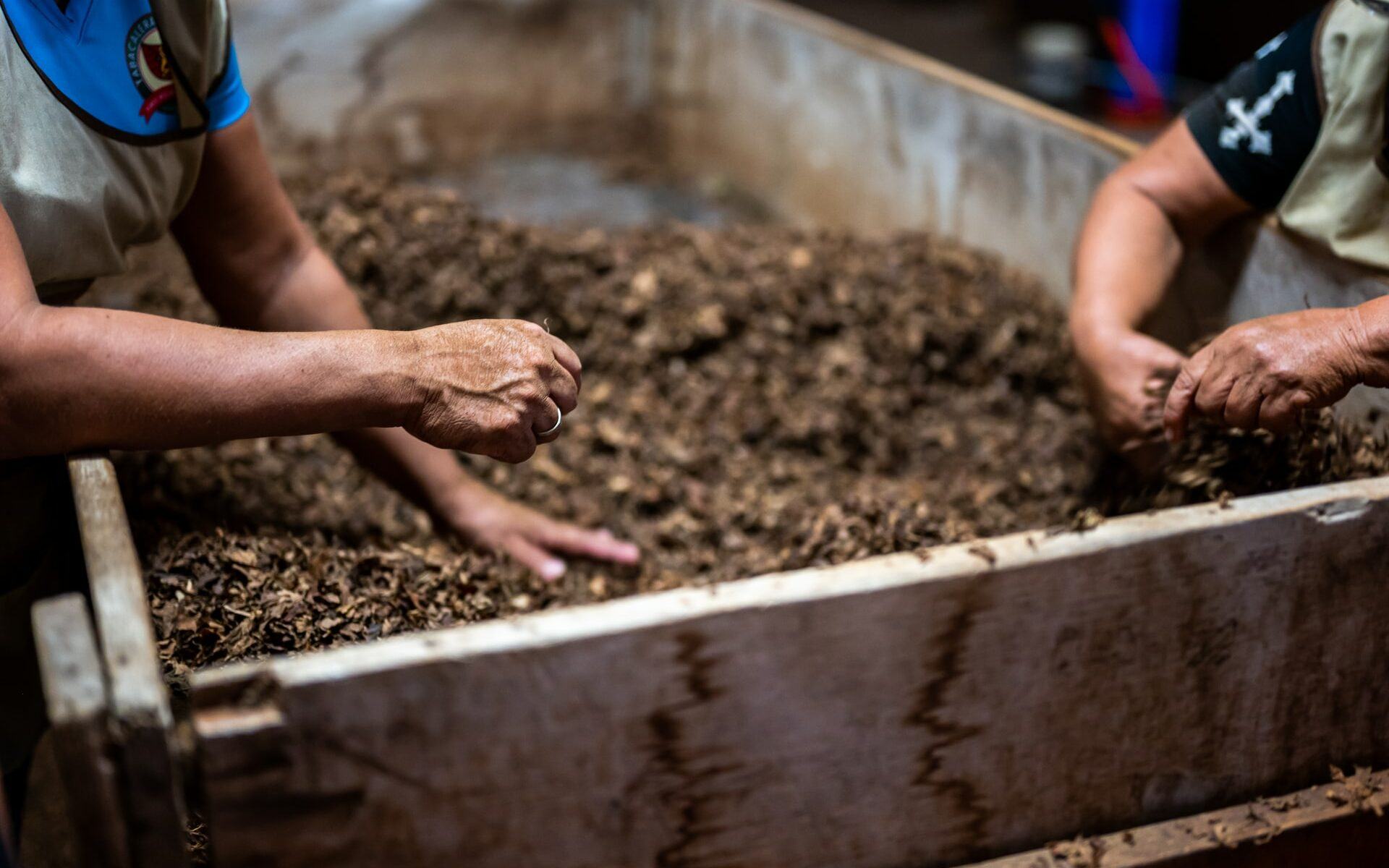
Hello Tracy, thanks for these wonderful tips on how to do better with your garden and I must say I feel excited about this post. I have been a fan of gardening since I was little and growing up, started a small farm but I have actually been making some silly mistakes which I just realised from this article of which the most common one is getting chemical fertilisers to use for my vegetables; and lastly, getting some really expensive seeds because i feel the more expensive the better it is.
I steal ….;sorry er … find things 🙂
Cuttings from blackcurrents , gooseberry , blackberry .
Scions from cherrys apple pear medlar etc
Stuff from abandoned gardens – arctichoke rhubarb etc
Stuff thats already escaped quince apple plum seedlings
Awesome idea! I should do an article on starting a garden with stolen…I mean, found cuttings.
Thanks for visiting, David.